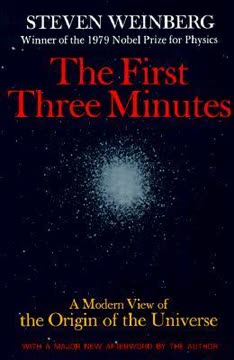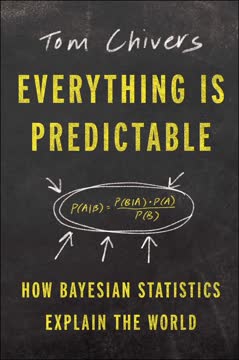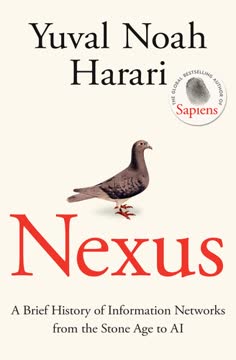نکات کلیدی
1. بحرانهای ملی نیازمند تغییر انتخابی و ارزیابی صادقانه خود هستند
"چالش برای ملتها همانند افراد در بحران، این است که مشخص کنند کدام بخشهای هویت آنها به خوبی عمل میکنند و نیازی به تغییر ندارند و کدام بخشها دیگر کارایی ندارند و نیاز به تغییر دارند."
تغییر انتخابی حیاتی است. ملتهایی که با بحران مواجه هستند باید به دقت سیستمها، سنتها و ارزشهای موجود خود را ارزیابی کنند تا مشخص کنند چه چیزی باید حفظ شود و چه چیزی نیاز به اصلاح دارد. این فرآیند نیازمند:
- ارزیابی صادقانه خود: شناسایی نقاط ضعف و شکستها
- انعطافپذیری: تمایل به پذیرش ایدهها و شیوههای جدید
- ارزشهای اصلی: شناسایی و حفظ جنبههای اساسی هویت ملی
حل موفق بحران معمولاً شامل:
- یادگیری از تجربیات دیگر ملتها
- ایجاد اجماع میان ذینفعان متنوع
- تعادل بین نیازهای کوتاهمدت و اهداف بلندمدت
2. جنگ زمستانی فنلاند: مطالعهای در زمینه تابآوری و عملگرایی
"هدف ما این بود که پیروزی روسیه را تا حد ممکن کند، دردناک و پرهزینه کنیم."
پاسخ فنلاند به تهاجم شوروی در سال 1939 قدرت وحدت ملی و تفکر استراتژیک را در برابر چالشهای بزرگ نشان میدهد. جنبههای کلیدی رویکرد فنلاند شامل:
- بهرهبرداری از مزایای جغرافیایی و اقلیمی
- به کارگیری تاکتیکهای نوآورانه در برابر نیروهای برتر
- حفظ انسجام سیاسی با وجود شکستهای نظامی
عواقب بلندمدت:
- حفظ استقلال فنلاند
- ایجاد یک سیاست خارجی عملگرا ("فنلاندیزاسیون")
- تقویت هویت ملی و افتخار
تجربه فنلاند نشان میدهد که چگونه یک ملت کوچک میتواند با ترکیبی از مقاومت نظامی، مهارتهای دیپلماتیک و سازش استراتژیک به چالشهای ژئوپلیتیکی پاسخ دهد.
3. ژاپن میجی: مدرنیزاسیون سریع از طریق سازگاری استراتژیک
"ژاپن به این ترتیب اولین نمونه از دو کشور است که با بحران ناشی از یک شوک خارجی ناگهانی مواجه شدهاند."
تحول ژاپن پس از ورود کمدور پری در سال 1853 قدرت تغییر انتخابی و سازگاری استراتژیک را نشان میدهد. بازسازی میجی شامل:
- صنعتیسازی سریع و مدرنیزاسیون نظامی
- پذیرش فناوریها و نهادهای غربی
- حفظ ارزشهای فرهنگی اصلی و سیستم امپراتوری
استراتژیهای کلیدی:
- ارسال مأموریتهایی به خارج برای مطالعه شیوههای غربی
- دعوت از کارشناسان خارجی برای کمک به تلاشهای مدرنیزاسیون
- تعادل بین سنت و نوآوری
دوره میجی نشان میدهد که چگونه یک ملت میتواند به طور رادیکال خود را تغییر دهد در حالی که هویت فرهنگی خود را حفظ میکند و زمینه را برای ظهور ژاپن به عنوان یک قدرت جهانی فراهم میآورد.
4. قطببندی سیاسی شیلی منجر به دیکتاتوری و نقض حقوق بشر شد
"برای من به عنوان یک بازدیدکننده از شیلی، آن حس عمیقتر هویت ملی یکی از بزرگترین تغییراتی است که تجربه کردهام."
بحران شیلی در دهه 1970 خطرات قطببندی سیاسی شدید و آسیبپذیری نهادهای دموکراتیک را برجسته میکند. تجربه این کشور شامل:
- فروپاشی سازش سیاسی
- کودتای نظامی و دیکتاتوری تحت آگوستو پینوشه
- نقض گسترده حقوق بشر و بازسازی اقتصادی
عواقب بلندمدت:
- انتقال به دموکراسی در دهه 1990
- تلاشهای مداوم برای رسیدگی به بیعدالتیهای تاریخی
- تلاش برای تعادل بین رشد اقتصادی و برابری اجتماعی
داستان شیلی به عنوان یک هشدار درباره اهمیت حفظ هنجارهای دموکراتیک و ترویج گفتوگوی سیاسی برای جلوگیری از تصرفهای خودکامه عمل میکند.
5. مبارزه اندونزی برای هویت ملی و آشتی
"اندونزی از هم نپاشید. بلکه به سرعت، حس هویت ملی را از نو ساخت."
چالشهای پس از استقلال اندونزی پیچیدگیهای ملتسازی در یک کشور متنوع و جزیرهای را نشان میدهد. جنبههای کلیدی تجربه اندونزی شامل:
- ایجاد وحدت ملی در میان گروههای قومی و زبانی متنوع
- گذار از دیکتاتوری به دموکراسی
- رسیدگی به بیعدالتیهای تاریخی و جنبشهای جداییطلب منطقهای
چالشهای مداوم:
- تعادل بین اقتدار مرکزی و خودمختاری منطقهای
- ترویج توسعه اقتصادی در سراسر مجمعالجزایر
- آشتی با میراث نقض حقوق بشر گذشته
سفر اندونزی اهمیت ایجاد روایتها و نهادهای ملی فراگیر در جوامع چند قومی را برجسته میکند.
6. تحول پس از جنگ جهانی دوم آلمان: از ویرانی به قدرت اقتصادی
"آلمان امروز از نظر اجتماعی بسیار لیبرالتر از سال 1961 است."
بازیابی آلمان از ویرانیهای جنگ جهانی دوم نمونهای از پتانسیل تجدید ملی از طریق مواجهه صادقانه با گذشته و بازسازی استراتژیک است. عناصر کلیدی تحول آلمان شامل:
- دِنازیفیکاسیون و ساخت نهادهای دموکراتیک
- معجزه اقتصادی ("ویرشتافتسوندِر") از طریق اصلاحات بازار
- آشتی با دشمنان سابق و ادغام اروپایی
درسهای آموخته شده:
- اهمیت مواجهه با گناه تاریخی
- ارزش همکاری بینالمللی و ادغام اقتصادی
- مزایای سرمایهگذاری در آموزش و رفاه اجتماعی
تجربه آلمان نشان میدهد که چگونه یک ملت میتواند شهرت بینالمللی خود را بازسازی کرده و از طریق ترکیبی از اصلاحات اقتصادی، تجدید سیاسی و مواجهه اخلاقی به شکوفایی دست یابد.
7. هویت در حال تحول استرالیا: از پایگاه بریتانیایی به ملت چند فرهنگی
"استرالیا دیگر عمدتاً سفید-بریتانیایی نبود."
تحول استرالیا از یک جامعه مستعمراتی با گرایش به بریتانیا به یک ملت چند فرهنگی در منطقه آسیا-پاسیفیک چالشهای بازتعریف هویت ملی را نشان میدهد. جنبههای کلیدی این تحول شامل:
- کاهش تدریجی وابستگی به بریتانیا
- کنار گذاشتن سیاست استرالیا سفید
- افزایش تعامل اقتصادی و فرهنگی با آسیا
عوامل تغییر:
- واقعیتهای ژئوپلیتیکی دوران پس از جنگ جهانی دوم
- تغییرات جمعیتی از طریق مهاجرت
- فرصتهای اقتصادی در منطقه آسیا-پاسیفیک
تجربه استرالیا اهمیت سازگاری روایتها و سیاستهای ملی با زمینههای جهانی در حال تغییر را در حالی که ارزشهای دموکراتیک اصلی را حفظ میکند، برجسته میکند.
8. چالشهای کنونی ژاپن: جمعیت پیر، نابرابری جنسیتی و رکود اقتصادی
"ژاپن به این ترتیب اولین نمونه از بحرانهای ملی ماست که اکنون به نظر میرسد در حال شکلگیری هستند و تنها آینده به ما خواهد گفت که آیا واقعاً یک بحران بزرگ بودهاند و نتایج آنها همچنان نامشخص است."
ژاپن با مجموعهای از چالشهای مرتبط مواجه است که تهدیدی برای پویایی اقتصادی و انسجام اجتماعی بلندمدت آن به شمار میرود. این چالشها شامل:
- جمعیت به سرعت پیر و نرخ زاد و ولد پایین
- نابرابری جنسیتی پایدار در محل کار و جامعه
- رکود اقتصادی و بدهی بالای دولت
راهحلهای ممکن:
- افزایش مهاجرت و تنوع نیروی کار
- ترویج تعادل کار و زندگی و برابری جنسیتی
- سرمایهگذاری در نوآوری و رشد بهرهوری
وضعیت ژاپن نیاز به پاسخهای سیاستی پیشگیرانه به چالشهای جمعیتی و اقتصادی را حتی در کشورهای بسیار توسعهیافته نشان میدهد.
9. ایالات متحده: نقاط قوت و تهدیدهای رو به رشد برای دموکراسی
"فقط ما آمریکاییها میتوانیم خود را نابود کنیم."
ایالات متحده دارای مزایای قابل توجهی است اما با چالشهای داخلی رو به رشدی مواجه است که تهدیدی برای نهادهای دموکراتیک و رهبری جهانی آن به شمار میرود. نقاط قوت کلیدی شامل:
- مزایای جغرافیایی و منابع طبیعی فراوان
- سنت قوی نوآوری و کارآفرینی
- جمعیت متنوع و بااستعداد
تهدیدهای نوظهور:
- قطببندی سیاسی و فروپاشی سازش
- نابرابری اقتصادی رو به رشد و کاهش تحرک اجتماعی
- سرمایهگذاری ناکافی در آموزش، زیرساخت و تحقیق
مورد ایالات متحده اهمیت رسیدگی به تقسیمات داخلی و سرمایهگذاری در سرمایه انسانی را برای حفظ رقابت جهانی و ثبات دموکراتیک نشان میدهد.
10. بحرانهای جهانی نیازمند اقدام جمعی و تفکر بلندمدت هستند
"آیا جهان موفق خواهد شد، اکنون که برای اولین بار در تاریخ با مشکلاتی مواجه هستیم که به طور بالقوه میتوانند جهانی و کشنده باشند؟"
چالشهای جهانی مانند تغییرات اقلیمی، کاهش منابع و اختلالات فناوری نیازمند سطوح بیسابقهای از همکاری بینالمللی و دوراندیشی هستند. رسیدگی به این مسائل نیازمند:
- غلبه بر منافع ملی کوتاهمدت
- توسعه مدلهای جدید حکمرانی جهانی
- سرمایهگذاری در فناوریها و شیوههای پایدار
حوزههای کلیدی برای اقدام:
- کاهش انتشار گازهای گلخانهای
- حفظ تنوع زیستی و اکوسیستمها
- مدیریت ریسکهای فناوری (مانند هوش مصنوعی و مهندسی زیستی)
پاسخ جهان به این چالشها تعیینکننده پایداری بلندمدت تمدن بشری و سلامت اکوسیستمهای سیاره خواهد بود.
آخرین بهروزرسانی::
FAQ
What's Upheaval: Turning Points for Nations in Crisis about?
- Exploration of Crises: The book examines both personal and national crises, drawing parallels between the two. It discusses how individuals and nations face challenges that require selective change to overcome.
- Case Studies: Jared Diamond uses historical examples from seven nations—Finland, Japan, Chile, Indonesia, Germany, Australia, and the United States—to illustrate how crises unfold and are resolved.
- Framework for Understanding: The author proposes a framework of factors influencing the outcomes of crises, emphasizing the importance of honest self-appraisal and national identity.
Why should I read Upheaval by Jared Diamond?
- Insightful Analysis: The book provides a deep understanding of how crises affect nations and individuals, making it relevant for readers interested in history, psychology, and political science.
- Practical Lessons: Readers can learn valuable lessons about resilience and adaptation, applicable to both personal and societal challenges.
- Comparative Perspective: By comparing different nations' responses to crises, the book encourages readers to think critically about their own country's challenges and potential solutions.
What are the key takeaways of Upheaval?
- Crisis as a Turning Point: A crisis is defined as a moment of truth that requires new coping methods when old ones fail. This concept applies to both individuals and nations.
- Selective Change is Essential: Successful resolution of crises involves recognizing which aspects of identity to retain and which to change. This selective change is crucial for both personal growth and national recovery.
- Role of Leadership: Effective leadership plays a significant role in navigating crises, as seen in the historical examples provided. Leaders must balance national identity with the need for adaptation.
What are the best quotes from Upheaval and what do they mean?
- “Crises may arise from external pressures.” This quote highlights that crises can stem from outside forces, such as wars or economic downturns, affecting both individuals and nations.
- “The challenge is to figure out which parts of their identities are already functioning well.” This emphasizes the importance of self-reflection during crises, whether personal or national, to identify strengths and weaknesses.
- “Finlandization is not for export.” This phrase critiques the idea that Finland's unique approach to managing its relationship with the Soviet Union could be applied elsewhere, underscoring the importance of context in crisis management.
How does Jared Diamond define a "crisis" in Upheaval?
- Turning Point Concept: A crisis is described as a significant turning point where conditions before and after are markedly different. This definition emphasizes the transformative nature of crises.
- Challenge to Coping Methods: Crises create pressure to develop new coping strategies when existing methods are inadequate. This applies to both personal and national contexts.
- Varied Interpretations: The author acknowledges that the term "crisis" can be defined in different ways, depending on the context and scale of the events being considered.
What factors influence the outcomes of personal crises according to Upheaval?
- Acknowledgment of Crisis: Recognizing that one is in crisis is the first step toward resolution. Without this acknowledgment, progress is unlikely.
- Acceptance of Responsibility: Individuals must accept personal responsibility for addressing their crisis rather than blaming external factors. This empowers them to take action.
- Support from Others: Emotional and material support from friends and family can significantly impact the outcome of a personal crisis. Building a network of support is crucial for recovery.
How does Upheaval relate personal crises to national crises?
- Shared Characteristics: Both personal and national crises involve challenges that require individuals or nations to reassess their identities and coping strategies. The book draws parallels between the two.
- Factors of Resolution: Many factors influencing personal crises, such as acceptance of responsibility and seeking help, also apply to national crises. This comparative approach helps readers understand the complexities of both types of crises.
- Crisis Resolution Frameworks: The author proposes frameworks for understanding how both individuals and nations can navigate crises effectively, emphasizing the importance of selective change.
What lessons can be learned from Finland's experience in Upheaval?
- Resilience in Adversity: Finland's ability to withstand the Soviet invasion during the Winter War illustrates the power of national identity and unity in facing overwhelming odds.
- Importance of Honest Self-Appraisal: The Finnish leaders' realistic assessment of their situation allowed them to make strategic decisions that preserved their independence.
- Selective Change: Finland's post-war policies exemplify how nations can adapt while retaining core values, demonstrating the effectiveness of selective change in crisis resolution.
How does Jared Diamond analyze Japan's transformation during the Meiji Era in Upheaval?
- Crisis as a Catalyst: The arrival of Commodore Perry in 1853 marked a crisis that forced Japan to confront its isolation and adapt to Western influences.
- Comprehensive Reforms: The Meiji leaders implemented extensive reforms across various sectors, including military, education, and government, to strengthen Japan.
- Balance of Tradition and Modernity: Japan's approach involved selectively adopting Western practices while retaining essential aspects of its cultural identity, creating a unique blend of old and new.
What role does leadership play in resolving crises according to Upheaval?
- Influence of Leaders: Effective leaders can significantly shape the course of a nation's response to a crisis, as seen in the examples of Finland and Japan.
- Vision and Strategy: Leaders must articulate a clear vision and strategy for navigating crises, balancing the need for change with the preservation of national identity.
- Crisis Management Skills: The ability to make tough decisions, communicate effectively, and inspire confidence is crucial for leaders during times of crisis.
What are the twelve predictive factors discussed in Upheaval?
- Acknowledgment of Crisis: Nations must recognize they are in a crisis to begin addressing it effectively. This factor is crucial for mobilizing resources and public support for change.
- Acceptance of Responsibility: Countries need to take responsibility for their situations rather than blaming external factors. This acceptance fosters a proactive approach to problem-solving.
- National Identity: A strong sense of national identity can unify citizens and motivate them to work together during crises. This identity often shapes how a nation responds to challenges.
- Flexibility and Adaptability: Nations that can adapt their policies and strategies in response to changing circumstances are more likely to succeed. Flexibility allows for innovative solutions to emerge.
How does Upheaval address the concept of democracy?
- Democracy's Advantages: Diamond discusses the potential advantages of democratic governance, such as citizen engagement and accountability. Democracies allow for debate and compromise, which can lead to better policy outcomes.
- Challenges to Democracy: The book also highlights the challenges democracies face, including political polarization and the erosion of democratic norms. These challenges can hinder effective governance and crisis response.
- Comparison with Dictatorships: Diamond contrasts democracies with authoritarian regimes, emphasizing that while dictatorships can implement policies quickly, they often lack the checks and balances that prevent harmful decisions.
نقد و بررسی
کتاب تحول نقدهای متفاوتی دریافت کرده است، با تحسین برای مطالعات موردی تاریخی و تحلیل بحرانهای ملی. خوانندگان چارچوب دایموند برای درک چگونگی مواجهه کشورها با چالشها را میپسندند، اگرچه برخی روششناسی و حکایات شخصی او را نقد میکنند. بررسی کتاب از فنلاند، ژاپن، شیلی و دیگر کشورها آموزنده تلقی میشود، اما کاربرد آن در مسائل جهانی کنونی ضعیفتر دیده میشود. در حالی که برخی این اثر را تحریککنندهی تفکر میدانند، دیگران آن را در مقایسه با کتابهای قبلی دایموند کمتر جذاب میبینند.
Civilizations Rise and Fall Series
Similar Books
















